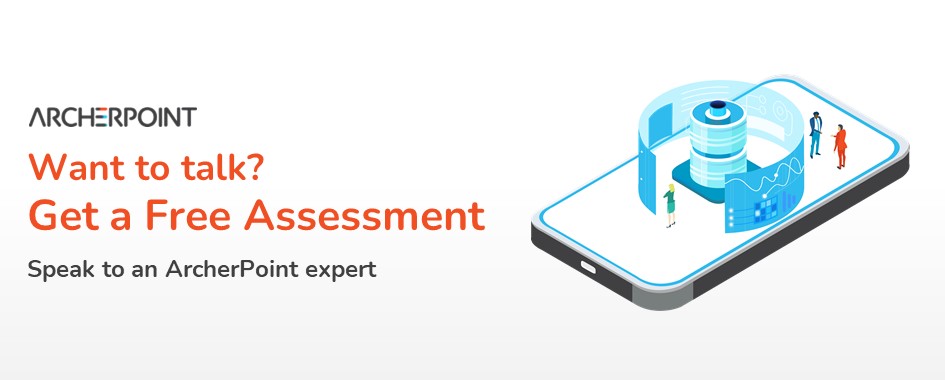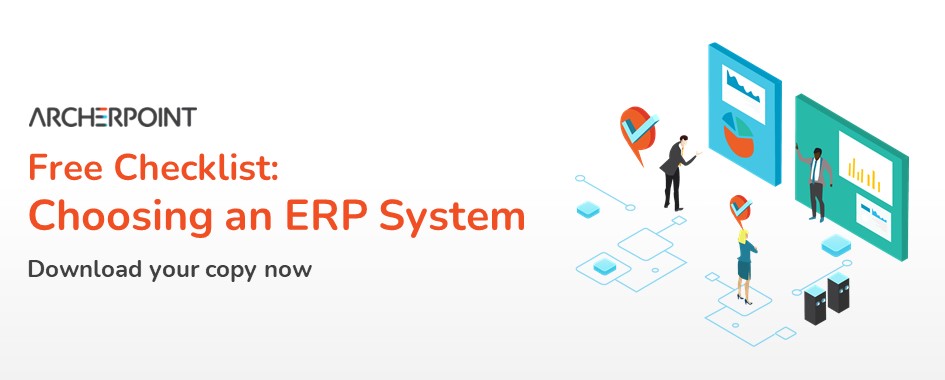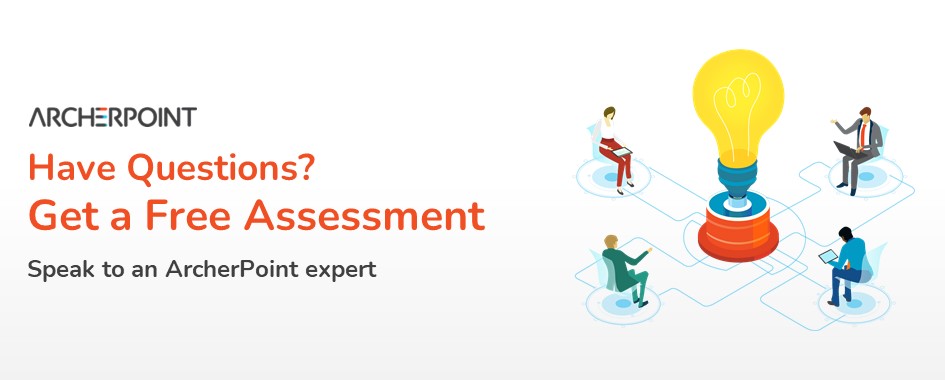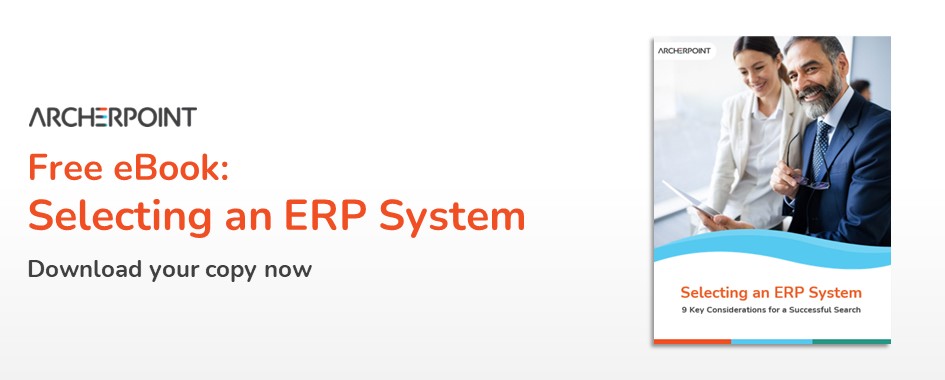Selecting the Best ERP System: What You Need to Know to Make the Right Decision

How to Choose the Right ERP System? Here’s What You Need to Know
If your company is currently searching for a new Enterprise Resource Planning (ERP) solution, you’ve either outgrown basic accounting tools like QuickBooks or your current ERP is unable to keep up with your business and needs to be replaced. If you’ve never bought an ERP system or if it’s been some time since your last purchase, you’ll find that the market and options have changed.
The process can be confusing and even overwhelming, as illustrated by these startling facts:

As many as 50% to 60% of ERP implementations fail due to underestimating the effort,
time, and resources to implement and maintain an ERP successfully.

Most ERP implementations cost 3-4 times what was budgeted regardless of the
deployment method chosen.
Failing to successfully deploy an ERP system is a very expensive proposition, but it can be avoided with some critical education. We’ll help you understand how to build your process for selecting an ERP that fits your organization and gives you the outcomes you want to be successful.
What is ERP (Enterprise Resource Planning)?
ERP or enterprise resource planning solutions are comprehensive applications that address key components of a business including accounting, supply chain management, procurement, project management, service management, manufacturing, sales, and compliance.
Historically, ERP systems were used primarily by manufacturing and distribution companies, as they touched so many aspects throughout supply chain operations. These solutions evolved from distinct supply chain applications to address the broader accounting and financial requirements of all businesses, along with industry specific functionality.
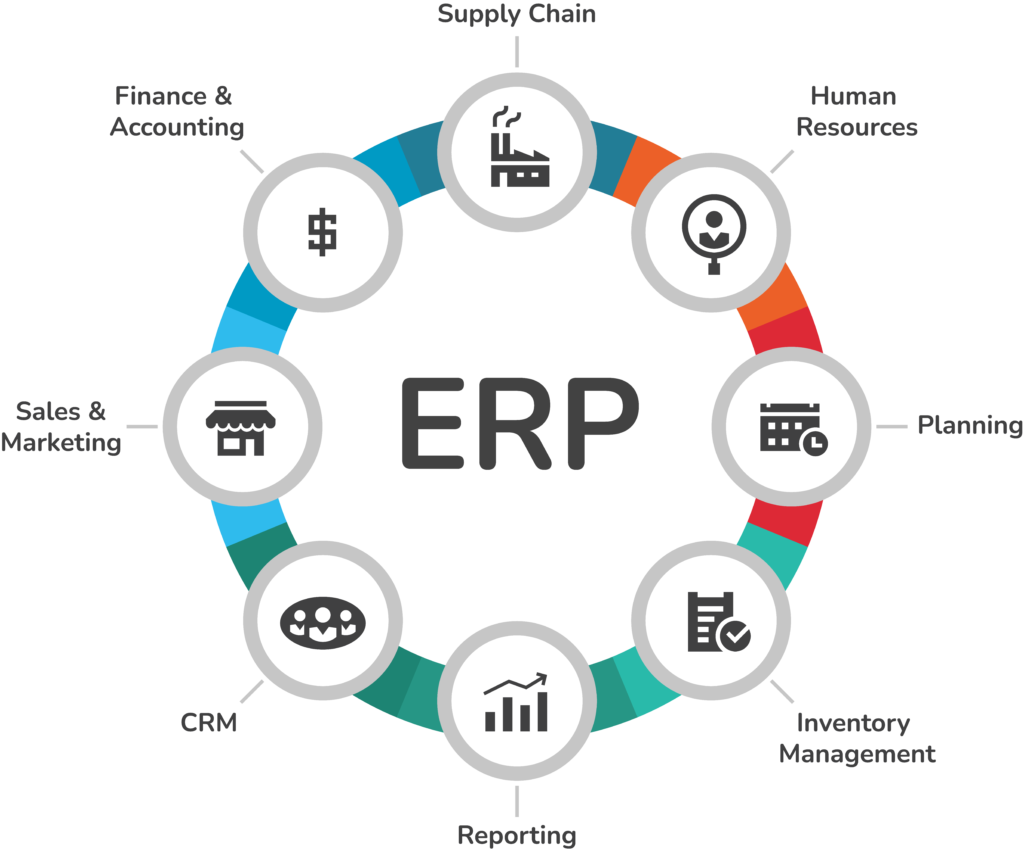
How ERP Solutions Have Evolved
While the basics of accounting haven’t changed, technology advances with cloud hosting and autonomous integration have dramatically altered the ERP landscape. In fact, the first point to make about today’s ERP is that it should not be confused with standalone accounting software.
Yes, ERP systems help you manage the financial and accounting aspects of your business, which is core to the solution. However, today’s ERPs are not simply accounting applications or supply chain-only solutions. Since they touch all areas of the business in some way, they are multi-faceted, operational platforms that serve as a business’s foundation. An ERP system, today, is designed to be the equivalent of the orchestra conductor of the business, not one of the musicians.

Likewise, today’s ERP solutions are much more than a traditional point solution, which is an ERP application that is designed to address a specific issue or problem related to an industry, for instance. While point solutions have the advantage of being narrowly focused or addressing very specific requirements—they often lack scalability and flexibility, requiring multiple point solutions to run your entire business.
The way businesses go about evaluating and selecting ERPs is different than it was 10 or 20 years ago. Gone are the days of the traditional RFP with a checklist of accounting and other feature types.
ERP solutions have evolved from their original purpose nearly 50 years ago, which was to expand beyond finance and accounting to support all areas of the business, with functionality that facilitates the coordination of processes and sharing information through one database, with everything tying back to finance and accounting.
The problem with ERP systems, however, is this–as the functionality expands, the more difficult and expensive it is to implement, maintain, and customize. The word “monolithic” comes to mind. But with advances in technology, modern ERP systems use a simplified approach through application extensions to provide the specific needs of businesses without requiring unwieldy customizations. Modern ERP also integrates with other business systems more easily, and the cloud enables faster processing as well as extensibility into mobile environments.
ERP systems have shifted away from a single-software approach to a platform approach with core functionality connecting to multiple, smaller, more agile applications, leveraging the flexibility offered by the cloud. They are deployed and operated remotely, which removes the financial burden of owning, maintaining, and upgrading hardware, infrastructure, and resources from the business. Software updates are delivered automatically in a regular, predictable cadence.
ERP systems also leverage the cloud for faster processing, better security, and reliable data protection. Data can be used in a multitude of ways, from reporting to AI to predictive analytics, which is extremely powerful.
This is what makes modern ERP systems platforms rather than narrowly focused applications. They are still very powerful but offer the flexibility and adaptability to seamlessly work together with other systems and tools throughout the entire organization, regardless of growth or changes.
The Best Process for Selecting an ERP System

Now that you have a general understanding of how today’s ERP systems differ from those in the past, it’s easy to understand, then, why selecting an ERP system is also different. So, what does ERP selection look like today?
First, checking off a list of features is no longer an appropriate way to decision. Organizations must approach the decision from a strategic standpoint and consider the needs of the organization holistically.
The majority of ERP applications have robust accounting and finance capabilities, and while some are stronger in specific areas—like a particular industry, for example—you can generally expect a certain level of accounting functionality from all of them. What they don’t all have is the ability to integrate with other systems, scale and grow, or provide adaptability to changes within an organization.

1. Outline Your Goals for Your ERP
Understanding where you are and why you are looking for a new ERP will help you determine what you need in your new system. It’s important to be clear on why you want a new ERP solution and what you hope to gain from it.
Create the goals for your project and system and be sure to align the goals with business objectives.
2. Goal Setting: Know the Why Behind Your Decision for a New ERP System
Investing in a new ERP solution is a significant investment of time and money. You should be clear on WHY your company is willing to commit its human and capital resources to the project.
Acquiring a new ERP solution should provide real value to the organization and should be a strategic decision that includes tactical benefits.
Strategic reasons to replace your ERP solution:
- Elevate and streamline your technology
- Decrease cybersecurity risks
- Minimize maintenance and support costs
- Improve your business’s ability to grow, expand, and scale
- Support merger and acquisition initiatives
Tactical reasons for replacing your ERP solution:
- Workflows cannot be automated, meaning staff must constantly perform routine tasks manually.
- Company data and reports are scattered throughout the company in the form of Excel spreadsheets and none of the reports are in real time.
- The current system cannot be modified to work with the company’s processes, so staff must change processes to work with the software’s limited capabilities.
- Month-end close process is time consuming and tedious.
- Handling routine accounting tasks, such as allocations, accruals, deferred revenue, and multiple companies lacks efficiency, accuracy, and automation.
3. Visualize Your Future State
As you look five to ten years ahead, consider where your company needs to be. Consider the size, number of employees, number of branches, geographical areas covered, and revenue growth goals. Also consider the technologies affecting your industry and any additional products or services you foresee your company providing in the future.
Don’t be afraid to dream big. The ERP solution you select must be able to support your businesses today and your 10-year goal. If it can’t, it will stifle growth and waste time and money.
4. Recruit an Executive Sponsor to Help Drive the Selection Process
The selection team will require manpower, financial resources, and executive sponsorship for support at the top level of the organization. We most commonly see the CFO, COO, or CIO/CTO serve as the executive sponsor for ERP selection.
Sometimes it is all of these individuals and the CEO. The executive sponsor supports the project at the highest level and helps to anticipate and remove obstacles to keep the process moving forward. This person will likely be involved in assembling the members of the ERP selection team and will be able to help resolve any conflicts as they arise.
The executive sponsor should assign a project lead to guide the selection team to ensure coordination among the team members, including scheduling meetings, achieving milestones, and providing regular updates to the leadership team.
5. Build the Software Selection Team
Your software selection team can participate in the goal and vision stages or be assembled once those points have been established. The ideal team is comprised of representatives from each functional area that will be using the application or be involved in the implementation and management of the application.
You will want to hear not just from managers, but also from the people who will actually be using the software, which could include representatives from finance, sales, marketing, operations, manufacturing, the warehouse, and field services. These individuals will bring their detailed knowledge from their areas of expertise to help identify the critical features and functions they will need the software to provide for their teams.
The selection team has the following responsibilities:
- Identifying the company’s requirements for the new software;
- Evaluating potential solutions;
- Developing a short list from those candidates;
- Performing due diligence of the short list candidates;
- Making a final recommendation.
Very often, this team will also be selecting the vendor/partner that will be implementing the software as well.
Some members of this team will only be a part of the project for the selection process, while others will stay on to help with the implementation effort. This team should have representatives from every department who will be using the system, including IT and Finance, but from other departments as well.
Define Requirements

It is important to take time to carefully evaluate your goals and processes to properly define your requirements. This is a critical step, as these requirements will guide your decision-making process. One place to start is by chronicling what is not working in your current system.
Research best practices and review your goals when defining requirements. Keep a centralized list that team members can add to over time and schedule meetings to discuss workflows, processes, and wish list items in the context of each team’s goals and the overall company goals.
Start by Evaluating Your Current Business Processes
As the selection team begins defining what the new system will be required to do, the natural tendency will be for each functional area to base the requirements on the processes currently in place. However, this often will lead to perpetuating inefficient business processes created to work around limitations in your existing system.
New ERP applications come with many powerful capabilities to customize the applications and create automated workflows, in many cases making your company’s existing manual processes obsolete. Moreover, now is a good time to take a step back and ask, “Why are we doing this process? And why are we doing it this way?”
Ultimately, you want to make sure you identify the business value of your existing processes and streamline or remove those processes that are inefficient or unnecessary.
This is an ideal time to work with a business analyst who will help you identify inefficiencies and help determine what your real needs are. This will guide the team to identify what is truly required in the new ERP system.
Requirements: Desired Future State

90 percent of ERP implementations fail to deliver any measurable ROI.
This is a tragic statistic—and one that can be avoided. The simple fact is that most companies don’t take the time to think about what they want their business to look like post-implementation. If you don’t know where you want to go, it’s nearly impossible to determine the best way to get there.
As part of defining your requirements, define your desired future state. Be as specific and measurable as you can; you will be glad you did because the ROI will be immediate and obvious.
What’s The Right ERP Solution for Your Company? Determining The Right “Tier”

ERP systems are commonly categorized in tiers: tier 1, tier 2, and tier 3. While there is no hard and fast rule that determines what defines the differences between the tiers, the factors that usually determine who uses them are:
- The number of employees in the organization
- The total revenue of the organization
- The complexity of the organization’s processes
- The number of users who will require access to the ERP
- Budget
- Complexity of requirements
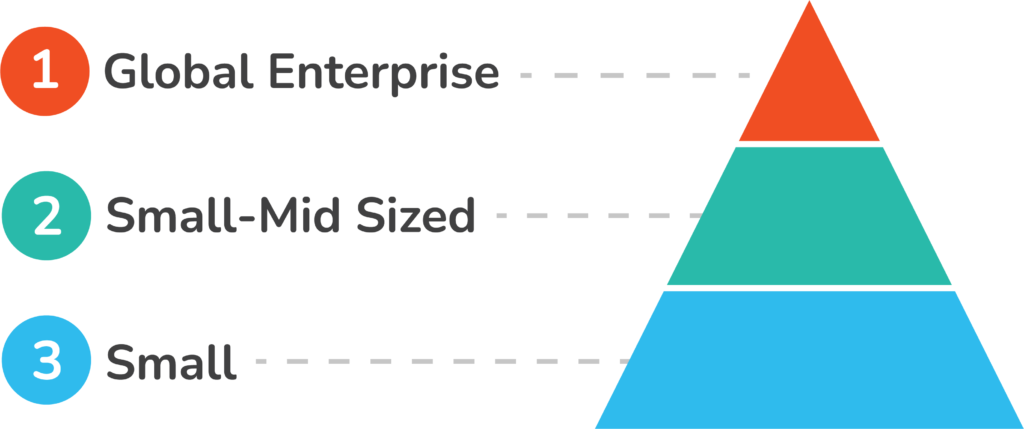

Tier 1
Tier 1 ERP systems are generally intended for global, enterprise corporations. These systems are complex, feature-rich, difficult to implement, and expensive (typically costing into the millions of dollars). There are only a few tier 1 ERP system manufacturers, with Microsoft, Oracle, and SAP being the main members in this group.
Pros:
- Used by large corporations (revenue in billions of dollars)
- Feature rich
- Flexible and easily customizable
- Can scale with the organization
- Supports a breadth of functional capabilities, including CRM, HCM, distribution, retail, manufacturing, etc.
- Can support thousands of users
Cons:
- Complex
- Requires long implementation time
- Can be difficult to learn and master
- Higher price tag

Tier 2
Tier 2 ERP systems are intended for small to mid-sized businesses. Tier 2 systems usually come with strong financial and operational capabilities, with fewer features as tier 1 systems. Tier 2 systems can support companies that are geographically separated, even international, as well as subsidiaries or branches. Tier 2 software is usually less complex to learn, easier to implement, and much less expensive than tier 1 software. There are endless solutions in the tier 2 market, with well-known leaders including Microsoft, Sage, Infor, and Epicor, along with SAP BusinessOne and Oracle NetSuite.
Pros:
- Sufficient features and functionality for moderately sized businesses and processes
- Can be customized, some better than others
- Flexible and scalable
- Supports hundreds to several thousand users
- Shorter implementation time than tier 1 systems
Cons:
- May not have the all the features needed
- Can be expensive
- Can be complex and difficult to learn

Tier 3
Tier 3 ERP systems are small software packages intended for small companies with competent accounting and operational requirements. While tier 3 systems might not be as feature rich as their tier 1 and tier 2 counterparts, they have a much lower price tag.
Pros:
- Sufficient functions for a small company with basic processes and limited needs
- Inexpensive
- Relatively easy to implement
Cons:
- Limited features and functions
- Limited customizations, flexibility, and scalability
- Limited user count
Keep in mind that many tier 2 products can work for large corporations, and not all large corporations need the capabilities of a tier 1 system, blurring the lines between what constitutes a tier 1 system and a tier 2 system. In fact, many large corporations today are comprised of a number of smaller companies, whether through acquisition or through organizational separation of function. It is quite common to see the parent company run on a tier 1 system while the smaller entities run a tier 2 system. The bottom line is that you need a full understanding of your company’s needs to determine which tier you should be evaluating.
ERP Requirements: Features and Functions
While your ERP selection plan should not revolve entirely around features and functions, you still need to have a good handle on what functionality you require—including industry specific needs. Your selection team should provide the requirements of their respective departments.
Again, your selection team must ensure they gather input from the people who will be using the software. These individuals can provide valuable input about what’s working well, what’s not working, and what they would like to have.
Here is a list of characteristics that you should consider when selecting an ERP system.
1. Longevity and affordability. The purchase and implementation of any ERP system will be a significant investment of time and money. As the backbone of your company’s finances and operations, you want whatever you choose to have the ability to serve your business for years to come. Therefore, you will want to make sure it has the capability to handle your immediate needs as well as your needs for the foreseeable future.
This also means making sure the vendor that creates the software will be around for that same timeframe. As your company matures, your needs will also change. You might need to manage inventory in multiple warehouses or track inventory sales through eCommerce. And as your business grows, you will need to add more users.
Look for an ERP system that allows you to add unlimited users and be aware that the costs of adding users in most ERP systems varies depending on the level of access each user requires. To find a solution that grows with your business, you will want to anticipate all these needs and find a system that can grow with your company.
2. Ease of customization. No ERP system will be a perfect fit for your business right out of the box. Every solution will require some degree of customization. A differentiator among ERP systems is how easy it is to customize the business logic over another and that you have the ability to easily upgrade those customizations regardless of whether you are using an on-premises or SaaS solution. Some questions to ask your ERP vendor might include:
- Can the business logic be customized?
- How easy is it to customize the software? Can you show me an example of how it works?
- Does the software support visual, drag-and-drop customizations?
- What programming language(s) is/are used for more complex customizations? How accessible are resources who know how to program these customizations?
- Does the software allow user-defined fields?
- What database is used? How easy is it to program the database? Can I make a copy of the database?
3. Industry-specific capabilities. The tier two market provides the widest array of industry-specific ERP solutions. If you are in a specialized industry, you’ll need to decide if you want a best-in-class ERP solution or a solution designed for your industry needs.
While you can customize your ERP solution to meet your specific requirements, you may be able to save development money by selecting an ERP solution that is already well suited to your industry and has modules that provide the bulk of the functions you will require.
The downside to this is that some industry-specific solutions tie you to a vendor or support partner and may have limitations. They may be developed by a smaller software vendor that lacks the resources to add features or keep up with technology changes.
4. Add-on products (ISV support). In addition to base functionality, most ERP software products are supported by a network of third-party Independent Software Vendors (ISVs) who create specialized applications that extend the capabilities of the base software.
These applications are often certified by the ERP platform provider and can be found in an app marketplace. They cover a wide range of features and capabilities, including EDI, warehouse management, credit card processing, eCommerce, business intelligence and reporting, manufacturing, payroll, and much more. Be sure to ask your ERP vendor about the app/ISV support for their software and whether your business will require the use of apps or ISV products in addition to the base ERP product.
5. Data handling. Your ERP solution will require a database for storing, accessing, and modifying your business data. However, not all databases are the same, and not all ERP vendors give you direct access to your data. It is your responsibility to know how your data will be stored and accessed, as well as how easy it will be for you to access, back up, and transfer your data. You do not want your data to be held hostage by the software vendor should you decide to change ERP systems.
Ask the software vendor or partner to demonstrate how you would create a backup of your data. In addition, if you will be using a cloud deployment option, national and international privacy standards (GDPR in Europe and CCPA in California, among others) make it incumbent on you to know where your customer data is stored, specifically, your responsibilities as they relate to data privacy. If you decide on a cloud deployment of your software, your hosting provider should be able to provide you with SOC 1 and SOC 2 reports that show how they manage data privacy and security.
6. Reporting. Because an ERP system touches all aspects of your company’s operations, you will be able to generate reports that tell you what is happening within your company, and in real time. All ERP systems provide the ability to generate standard financial reports, and most will allow users to customize existing reports and create new ones.
However, it is not always that easy to modify reports in some ERP software. In fact, some make it nearly impossible. Ask your software vendor to show you how easy it is to modify existing reports and create your own custom reports.
7. Agility/flexibility to grow with the business. Another very important consideration is whether the software will be able to grow as your company grows. Some ERP solutions limit the number of simultaneous users, while others have limited financial, international, multi-company, or industry-specific capabilities. Make sure you know that the software you select will support your company’s growth plans over the next five to seven years.
8. Scalability. As your needs change, you will require additional computer power (memory, disk space, data usage, transaction volume, etc.). In an on-premises deployment, you must anticipate these needs and purchase the computers systems that have the capacity to handle them, as well as have the staff to support and maintain them. One advantage of cloud deployments is that the hosting provider can add these resources as needed, and you pay for what you need.
9. Financial capabilities. ERP software is built around financial capabilities, so most standard accounting needs will be supported, right? Not necessarily. Some questions to ask might include:
- How much flexibility does the chart of accounts provide?
- How easy is it to manage intercompany accounting, reconciliation between subsidiaries and branches, etc.?
- Does the software make it easy to manage recurring and deferred revenue (ASC 606 and IFRS 15)?
- Does the software support payroll capabilities?
- Does the software support multiple languages and/or currencies? International entities?
ERP Requirements: Infrastructure
Selecting an ERP solution involves more than just a feature/function list. It is important to remember that your ERP system is going to touch every part of your organization. In many ways, it is the engine that runs the business, so it needs to perform now, and into the future, which requires the right infrastructure.
Consider your requirements in the following areas:
- Transaction Processing: What is the peak transaction volume you require the system to support? Are there charges for high volume transactions?
- Reporting: Are there any reports you will require the system to produce? Do you use AI or business intelligence applications that must be able to communicate with your ERP system?
- Integrations: Will it integrate with other business applications (CRM, HCM, eCommerce, productivity tools like Microsoft Office, etc.)?
- Compliance: Are there specific compliance regulations for your company? Are you a publicly traded company or considering IPO?
- Data Storage: How large does the database need to be?
- Availability: Does your company require 24/7 remote access?
- Security: How are user roles and permissions handled?
ERP Requirements: Deployment Options
Not that long ago, most companies would buy computer hardware, have the ERP application installed on it, and maintain these computer systems themselves in their computer room on the corporate campus (on premises). Users had to be at their desks to access it.
Today’s modern ERP systems are designed to run on computer hardware hosted remotely and accessed over the internet (sometimes called cloud-based software, Software as a Service, or SaaS).
Some modern ERP systems can even run in a hybrid configuration, with some of the application running on computer servers on premises and other parts of the application running in the cloud. While each deployment option offers advantages and disadvantages, cloud deployments offer the most advantages to most companies.
Availability. Cloud-based ERP applications are available anytime from anywhere there is an internet connection, facilitating a remote workforce.
Security. Most of the major hosting providers for cloud software, like Microsoft, Amazon, and Oracle, offer enterprise-grade intrusion detection, servers located in various geographical regions to avoid failures due to natural disasters in one area of the country, and high availability – features that exceed those found in most on-premises deployments.
Flexibility. Since hosting providers are essentially leasing their computer hardware to run your cloud applications, they can easily scale your hardware usage to match your current needs. By contrast, on-premises deployments require that you make an upfront purchase of the hardware you will need for your peak demand, even if you won’t need those resources 99% of the time.
Predictable costs. The monthly fee includes most of the maintenance and administration of the hardware and software of your cloud application, reducing your IT costs and making it easier to budget for a predictable amount each month.
Requirements: Other ERP System Considerations
Once the final ERP candidate is selected and implemented, the requirements document produced by your selection team will form the basis of the acceptance testing by your company to ensure that the product meets all your requirements. Therefore, the requirements document produced by your selection team should be as complete and detailed as possible.
Your team will want to address some additional considerations, such as:
- Rules, regulations, standards, and other requirements unique to your industry
- Technology trends in your industry that will impact your ability to conduct business in the near future
- Metrics, such as peak performance criteria, that impose performance requirements for the ERP
- Budget, timeframe, and other constrains placed on the project
Make a Short List of ERPs

Once you have the list of potential ERPs pared down to the top three or five, it’s time to start digging into the specifics of what you will be getting and whether the product will be right fit for your company. Here are a few ideas to keep in mind as you evaluate the potential candidates.

Future: Where Are They Now and Where Are They Going?
Roadmap. ERP vendors will publish a roadmap of their product every year. A roadmap shows where the product is going over the next 3-5 years. Roadmaps will show ongoing bug fixes, support for new standards, and future enhancements, including new features and technologies that are currently in development. Expect modern ERP solutions to include items like artificial intelligence (AI), machine learning (ML), or blockchain in their roadmaps.
Release schedule (major and minor). All software vendors have continuing release schedules that update the software with bug fixes, security fixes, new features, and enhancements to existing features. Releases are referred to as “major releases” and “minor releases” (sometimes called “point releases”, as in “Release 3.2”).
Major releases contain major enhancements to the application, such as a new user interface or an additional module that was in high demand. Minor releases contain small adjustments to the application, such as bug fixes or an addition to a form to improve usability.
Knowing an application’s major release schedule gives an indication of the level of active development on the product. An application with major releases twice a year or more indicates the software manufacturer is motivated to continue to invest in the product over the foreseeable future.
Support: How Well Do They Support Your Operations?
Integration models. Ensuring integration to other business applications your company uses is becoming increasingly important in ERP selection. You should look at the available integrations for external business applications (CRM, HCM, BI, etc.) that you are using or plan to use.
Support. If you purchase your software, you will typically be charged a maintenance fee (roughly 15-20% of the purchase price of the software) that includes support and upgrades.
If you are on a subscription plan, the subscription includes updates to the core ERP software system. The partner that installs the software might offer a separate support plan. These plans can provide support for software use, performing upgrades, and restoring service in the event of outages. The details of each support plan and their prices can vary widely. Much depends on whether you need 24/7 support or problem resolution in a short time frame.
You should evaluate your business needs and decide on your requirements. The support plan that is right for you depends on your unique business requirements. Ask your implementation partner to help you understand your support options.
Scalability and flexibility. Whether you are deploying in the cloud or on premises, you will want your ERP solution to scale as you grow and allow you to add functionality as your company is ready for it. Modern cloud-based ERP solutions (and some on-premises deployments) make it easy to toggle modules on and off, add or remove user licenses, and add or remove hardware resources, bandwidth, and transaction volumes.
You will also want to identify those ERP solutions that will be able to support any plans for the business, such as eCommerce, multiple warehouses, distribution, manufacturing, and payroll. The last thing you need is to be kept out of a market because of the limitations of your system.
Availability of training. Selecting the optimal ERP solution for your company is meaningless if your staff doesn’t know how to use it. If you doubt that, consider this statistic:
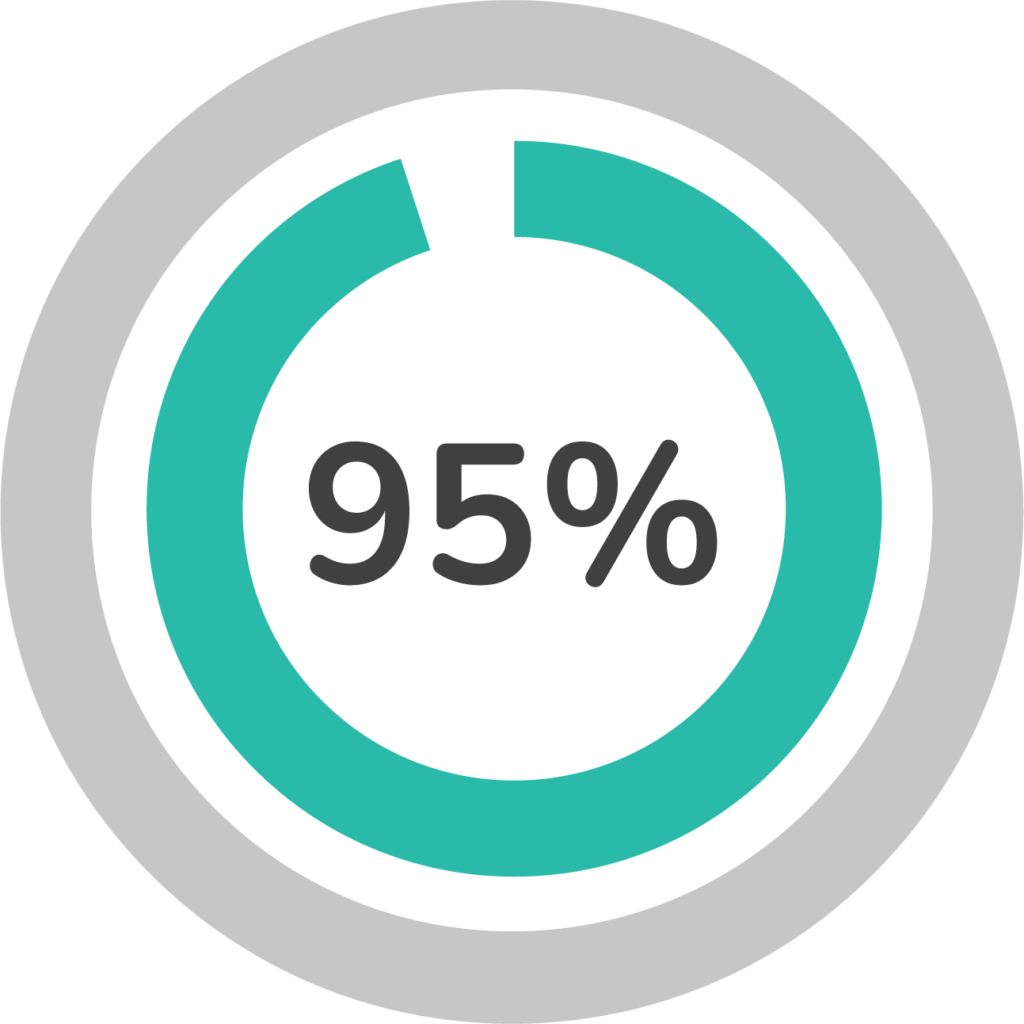
Make sure you provide training to your key staff who will be involved in the ongoing functions of using and administering the software.
There are many different training plans by the various partners and vendors. Some questions to ask:
- Do you offer in-person training? If so, does training happen at our facility or at a separate training center?
- Is there a cost for training? If so, how much?
- Is there a contact we can call to have questions answered?
- Do you offer on-demand (virtual) training? Is there a cost if you do?
- Is your documentation online? If so, can we have access to it to review it?
- Do you offer a comprehensive knowledge base? If so, can we have access to it to review it?
Analyze: How Do They Stack Up?
As in any major purchase, whether for yourself or for your business, you will want to perform due diligence to make sure you are hearing both the good and the bad about the product.
Analyst reviews. All the major ERP systems are evaluated by industry analysts, like Gartner, Nucleus Research, and Forrester. These analyst reviews provide expert comparisons of each ERP, giving the pros and cons of each. The implementation partner should be able to provide current analyst reviews of their product.
Customer reviews. While analyst reviews are good, it is also a good idea to see what actual users are saying about your proposed purchase. Websites such as G2.com that offer user reviews that discuss the good and the bad about the solution can give you questions to explore with your implementation partner.
Check references in your industry. Be sure to ask each implementation partner on your short list to provide references of companies like yours that are using their product and contact these references. Find out their likes and dislikes about the product as well as how well it works for companies in your industry.
Usability: How Well Will You Adapt?
No matter how easy the ERP system is to implement and use, it will require a seismic shift in the way your company operates. So, there will always be bumps during the implementation process and staff complaints about how the software works. Your goal is to choose a solution that minimizes these impacts on your employees who will be using the software every day.
Ease of implementation. To ensure the implementation goes as smoothly as possible, it is critical that your implementation team work closely with your ERP partner to plan the implementation process. As you evaluate ERP systems, you are also evaluating the partner who will be performing the implementation.
Spend some time making sure you understand the implementation process, including the tasks your team will be required to perform and the timeframe they expect the project will take to complete.
Ease of use. We would venture to guess that every ERP vendor will say that their software is easy to learn and easy to use. Look past the marketing hype and have the software vendor demonstrate how to perform a handful of moderately complex tasks that your company routinely faces. Provide them with a list of these tasks and sample data so you can see how easy it can be for your staff.
It is important to include suggestions from the staff that will be using the software, so they have a voice in the software selection process. Their insights into how the software needs to perform is crucial to selecting the right software.
Ease of upgrades. For most modern ERP systems, upgrades have become a non-event. However, some ERP software upgrades can be complex and time consuming. Whether you choose to implement in the cloud or on premises, make sure you understand the process to upgrade the software.
Pricing: Different Purchasing Models
ERP software can be either purchased or leased. It is important to understand how each pricing model works.
When you purchase ERP software, you own it. However, you will usually pay a percentage of the purchase price (usually between 15-20%) for continued maintenance and support. This will include new features and bug fixes as they become available in new releases.
Most ERPs will charge you by the number of users who will require logins to the software. The software might be licensed by how many users can be logged in at a certain time (“concurrent users”) or for specific users who can access the system (“named users”). There are also different charges per user depending on the level of access they require.
Cloud-based ERP vendors will charge a monthly or annual subscription fee. This fee includes maintenance and software releases, but you are leasing the software, not purchasing it. If you decide to discontinue paying the fee or if you end your contract, you will lose access to the software.
Price Isn’t Everything
Minimizing cost is often a goal, but don’t let that be the key driver of your decision.
First, consider that there is a cost to doing nothing. If you are maintaining an aging system because you can’t afford the cost of implementing a new one, think about these costs:
- The cost of maintaining the hardware and operating systems of the current ERP system.
- The cost of continuing maintenance of your existing software. And if you are not paying for ongoing maintenance, you are not receiving updates to your software. These updates include bug fixes and security fixes that help protect your critical business information. Make sure you understand the cost implications if your data is compromised.
- Ongoing costs for add-on software that is now found as standard features in modern ERP software.
- The cost of inefficient or manual processes by your staff to make up for deficiencies in your antiquated software.
Second, even if you do decide to move to a modern ERP software, make sure you look beyond the cost of the software, including:
- Hardware and software requirements
- Other licenses software in addition to ERP (database, web server, CRM, HCM, etc.)
- Cost of the number and types of user licenses you will need
- Implementation costs
- Support plan
- Training costs
- Add-on (third-party) software and customizations
Ultimately, you are looking for the best ERP system that will help your company grow over the next 5-7 years and, hopefully, beyond that. That software may not be the cheapest initially, but it has a very good chance of saving you money through better processes, scalability, and adaptability in the long run.
Choosing an ERP Partner Is as Critical as Choosing an ERP System

Once you have your short list of potential ERP candidates, determine if the software provider offers implementation services directly or has a channel of certified partners, sometimes referred to as VARs (Value Added Resellers).
ERP software is complex. It is not something you will want to try to install yourself. Instead, you will want to work with a partner that understands the software and understands the unique requirements of your industry. In fact, many partners understand how the software works for their clients better than the software development team that wrote the product because they are the ones setting up and implementing the software day in and day out.
Choosing the right ERP partner to demonstrate and install your software is just as important as choosing the right software. The partner will be responsible for understanding your requirements, installing and configuring the software to meet those requirements, moving your data from your existing accounting/ERP software to the new system, developing customizations, training your team, and providing ongoing application management and support.
This will require a high level of cooperation between your company and your partner for the project implementation and post go-live. As leadership guru Simon Sinek said, “A team is not a group of people that work together. A team is a group of people that trust each other.”
A team is not a group of people that work together. A team is a group of people that trust each other.
Simon SinekLeadership Guru
Find a partner that has demonstrated expertise in the ERP and supporting complementary technologies. Once you have identified the short list of ERP products you want to see demonstrated, you will also need to start searching for the provider that best represents each of those products and the technologies that support it and interact with it (e.g., productivity tools, platforms, etc.). You will want to find partners that have a long history of working with the product and track record of successfully installing, managing, and supporting the software you are considering.
You can find evidence of the partner’s expertise in the software by visiting their website, as well as third party websites like G2.com. Most partners will post informative blogs and articles that help you understand and use the ERP system(s) they represent. They will also often list their partner certifications and status with the ERP vendor.
Find a partner that has demonstrated expertise in your industry. To properly install and configure the ERP software optimized for your business, the partner should also understand how your industry works. Ask them how many companies they have worked with in your industry and be sure to check their references.
Find a partner that has your success—not selling you software—as their priority. Most ERP partners represent one or maybe a small number of ERP and other complementary products. This is normal, and it is also normal for them to hope that your needs can be met by a product they represent. However, it is critical that the partner listens to your needs and is honest about whether they can offer you an ERP that’s the right fit. If they keep having to come up with workarounds to questions and requirements you present, they might be trying to sell you the wrong solution.
Find a partner that is responsive to your needs. The implementation of your ERP software will take some time, and you will be working closely with your partner during that time. If you don’t have a partner that communicates and works with your team in a collaborative way, it can be a painful experience. Your partner needs to have the right skills and experience, but you also need to feel comfortable with them. Don’t be afraid to ask to meet the people who will be working on your implementation—not just the sales team.
Find a partner that is transparent about costs, capabilities, and timelines. There are many aspects to ERP software. The price tag is just one aspect. Make sure your partner is up front about the real cost of the system over time, including installation timelines, any third-party products you will need to run the product, the cost of renewals, and the costs of training and support.
Find a partner that is committed to being there for the long term. If you want an ERP solution for life, you need a partner for life, too. Make sure the partners you’re considering understand that you’re looking for a long-term relationship and ask them to show you how they manage the relationship after the implementation is completed and as the years go by.
For instance, are they experienced at upgrading the software? Do they stay abreast of the latest technologies? What types of service and support agreements do they offer? Do they have proactive as well as reactive support?
Managing the ERP Demonstration
Once you have your short list and you’ve made arrangements with the partner(s) to see a demonstration of the product, be prepared. The demonstration is your opportunity to see the software in action—but beware of the canned presentation.
Every partner will want to show you what their software does well, but stay focused on what you require and avoid being dazzled by features and functions you don’t need. Hopefully, the partner will meet with you before the demonstration to understand how your business operates, as well as your challenges and goals, so this won’t be an issue.
Make sure you send the vendor your requirements and, if possible, a sample of your company’s data ahead of time, and ask them to show you how their software will accomplish specific tasks identified in your requirements. If they claim that something is easy to do, like change a report or customizing a process, have them show you how that is performed during the demo. Remember, you will be using this software for years to come – make sure it can deliver on their promises.
Review Available Third-Party Add-Ons
There are many quality ERP products to choose from, but as you go through your requirements, you will find that only a handful of these products can provide what you need. To be realistic, you will not find an ERP solution that will meet every requirement out of the box. However, every ERP product has the capability to be customized to accommodate unique business requirements. This makes it easier for third-party software vendors to develop unique solutions (often called add-ons) that complement the base ERP product.
And if your company has a unique need that has no third-party product to fit, the solution provider can develop that for you with a customization. Be aware that customizations cost money, and some ERPs are easier to customize than others. In addition, most SaaS-based ERPs preserve customizations better during software updates than others.
However, also be aware that most modern ERP solutions already include many features that used to be available only as add-on products, and that these modern solutions use advanced customization tools so that non-technical users can create sophisticated solutions and automations without the knowledge of complex programming languages.
Chances are, no matter which ERP you select, you will need some degree of customization to optimize it for your company. Make sure you understand how easily the software can be modified, the third-party products you will needs, and the costs associated with each.
Give Your Decision the Attention It Deserves

An ERP solution is a big investment, regardless of how you decide to deploy it, because it’s not just about cost. Your ERP system is the backbone of your business. Your employees depend on it to do their jobs. Your finance and accounting people depend on it to keep money flowing in and out. Your leadership team depends on it to make informed strategic decisions that will impact the future of your company. The right ERP can, quite literally, mean the difference between failure and success, both short and long term.
Download our eBook for 9 considerations when conducting your ERP search or contact ArcherPoint to request a discovery call.

